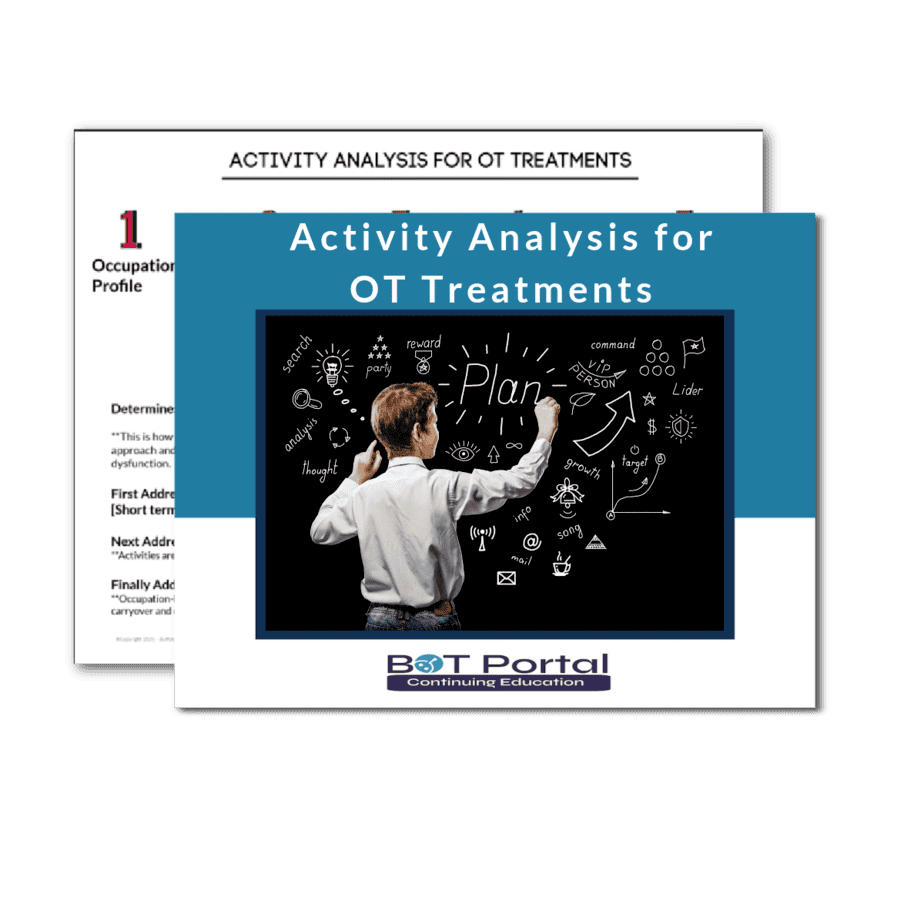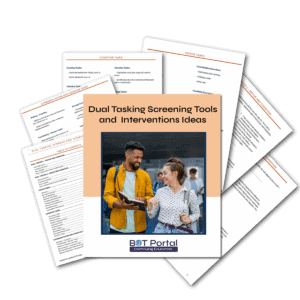Description
Activity Analysis
Activity Analysis in OT Treatments
Activity analysis is a crucial process in occupational therapy (OT) rehabilitation that involves breaking down everyday tasks or activities into smaller components to understand how they affect a person’s ability to function independently. This analysis helps occupational therapists design tailored treatment plans that address specific challenges and goals for individuals recovering from injury, illness, or disability.
At its core, activity analysis is about understanding the demands of various activities and how they interact with a person’s skills, abilities, and environmental factors. For example, imagine the task of buttoning a shirt. To analyze this activity, an occupational therapist would consider factors such as fine motor skills, hand-eye coordination, strength, and cognitive abilities required to complete the task successfully. They would also assess the physical environment, such as the type of clothing and buttons being used, as well as any adaptive equipment that may aid in the process.
The importance of activity analysis in OT rehabilitation lies in its ability to guide treatment planning and intervention strategies. By breaking down activities into their component parts, therapists can identify specific areas where individuals may be experiencing difficulties and develop targeted interventions to address these challenges. For instance, if a person has difficulty buttoning their shirt due to limited hand strength, the therapist may recommend exercises to improve hand dexterity or provide adaptive devices like buttonhooks to make the task easier.
Furthermore, activity analysis allows therapists to set realistic goals and track progress over time. By understanding the demands of everyday activities, therapists can establish meaningful objectives that align with an individual’s interests, priorities, and functional needs. As treatment progresses, therapists can reassess activity performance to measure improvements and make adjustments to the intervention plan as needed.
Importantly, activity analysis is not limited to specific tasks but extends to broader areas of occupation, including self-care, work, leisure, and social participation. By analyzing a range of activities that are meaningful and relevant to the individual’s life, therapists can address holistic needs and promote overall well-being and independence.
Activity analysis is a vital component of OT rehabilitation that helps therapists understand the challenges individuals face in performing everyday activities. By breaking down tasks into their component parts, therapists can develop targeted interventions, set meaningful goals, and track progress over time. Ultimately, activity analysis empowers individuals to regain independence, participate fully in life, and achieve their rehabilitation goals.




